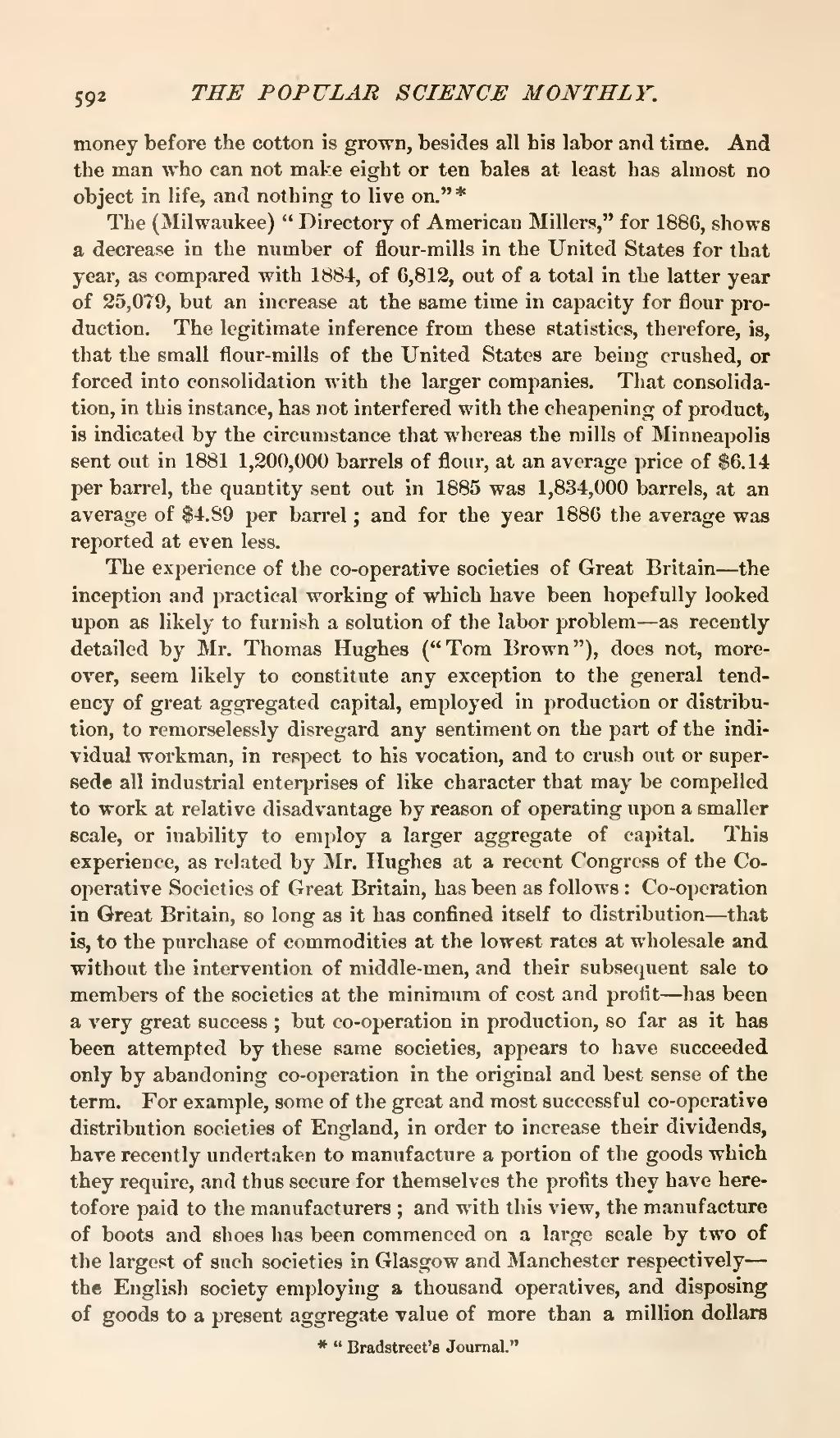money before the cotton is grown, besides all his labor and time. And the man who can not make eight or ten bales at least has almost no object in life, and nothing to live on."[1]
The (Milwaukee) "Directory of American Millers," for 1886, shows a decrease in the number of flour-mills in the United States for that year, as compared with 1884, of 6,812, out of a total in the latter year of 25,079, but an increase at the same time in capacity for flour production. The legitimate inference from these statistics, therefore, is, that the small flour-mills of the United States are being crushed, or forced into consolidation with the larger companies. That consolidation, in this instance, has not interfered with the cheapening of product, is indicated by the circumstance that whereas the mills of Minneapolis sent out in 1881 1,200,000 barrels of flour, at an average price of $6.14 per barrel, the quantity sent out in 1885 was 1,834,000 barrels, at an average of $4.89 per barrel; and for the year 1886 the average was reported at even less.
The experience of the co-operative societies of Great Britain—the inception and practical working of which have been hopefully looked upon as likely to furnish a solution of the labor problem—as recently detailed by Mr. Thomas Hughes ("Tom Brown"), does not, moreover, seem likely to constitute any exception to the general tendency of great aggregated capital, employed in production or distribution, to remorselessly disregard any sentiment on the part of the individual workman, in respect to his vocation, and to crush out or supersede all industrial enterprises of like character that may be compelled to work at relative disadvantage by reason of operating upon a smaller scale, or inability to employ a larger aggregate of capital. This experience, as related by Mr. Hughes at a recent Congress of the Co-operative Societies of Great Britain, has been as follows: Co-operation in Great Britain, so long as it has confined itself to distribution—that is, to the purchase of commodities at the lowest rates at wholesale and without the intervention of middle-men, and their subsequent sale to members of the societies at the minimum of cost and profit—has been a very great success; but co-operation in production, so far as it has been attempted by these same societies, appears to have succeeded only by abandoning co-operation in the original and best sense of the term. For example, some of the great and most successful co-operative distribution societies of England, in order to increase their dividends, have recently undertaken to manufacture a portion of the goods which they require, and thus secure for themselves the profits they have heretofore paid to the manufacturers; and with this view, the manufacture of boots and shoes has been commenced on a large scale by two of the largest of such societies in Glasgow and Manchester respectively—the English society employing a thousand operatives, and disposing of goods to a present aggregate value of more than a million dollars
- ↑ "Bradstreet's Journal."
